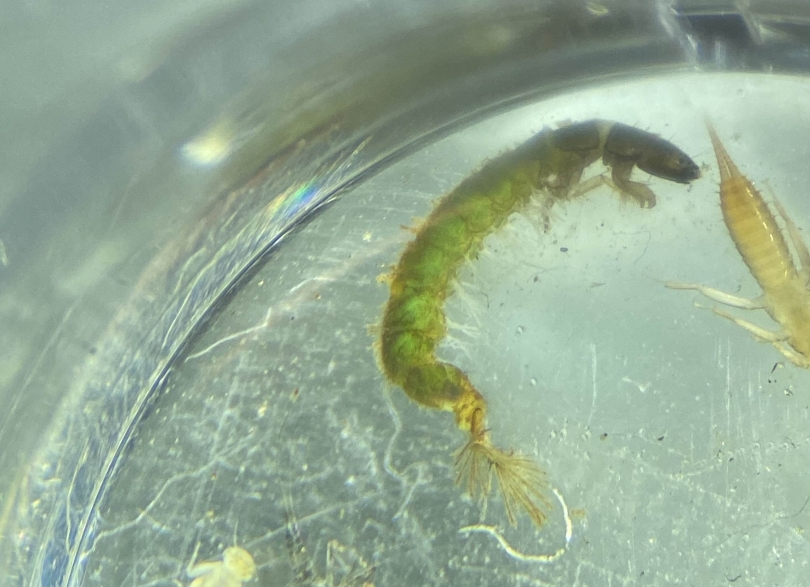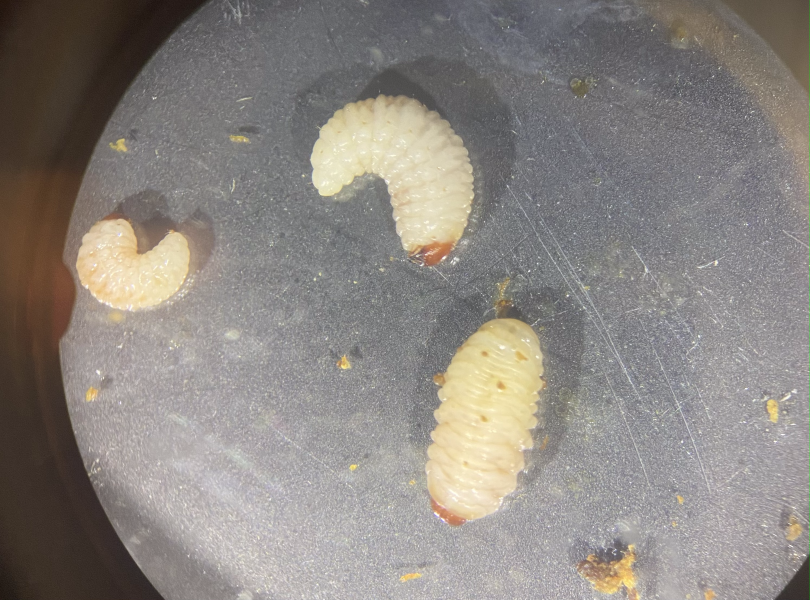

Martin Skacel


A Look Inside of Biology 16: My Ecology Lab!
Of the three classes I'm taking this term, the lab component of my ecology class has been one of my favorite weekly activities! In case you don't know what "Lab" at Dartmouth is; in several STEM-related classes here—you'll meet with a small group of students from your class for a few hours each week and conduct experiments or demonstrations related to the things you learn in class! This Fall, my ecology (Biology 16) lab has been something I especially look forward to each week!
Aquatic Invertebrates in Local Streams!
Last week, we conducted our "Aquatic Invertebrates in Local Streams" lab. For this lab, we set out into a local stream in the town of Norwich (just across the Connecticut River from Dartmouth, in Vermont) to investigate the presence and frequency of certain types of invertebrate organisms living there!
Like most labs here at Dartmouth, we started by preparing our materials and going over the scientific background of Aquatic Stream Invertebrates at the Life Sciences Center (where my ecology lab meets each week). Once we were ready, we paired up, grabbed our supplies, hopped in the vans, and headed to the stream!

Once we arrived at the site, we did a small hike up the stream (and through it) to get to our testing locations. Don't worry; we brought waders (waterproof boots and pants) to help us get through deeper parts of the stream.
At the stream, we set up our equipment and collected invertebrates by lightly disrupting the silt and sand at the bottom of the streams and catching any invertebrates that came out! We also measured chlorophyll levels at our selected sites and other factors, such as the depth of the area and the types of sediment present at that particular spot.

This week, we'll be analyzing all of our collected data and investigating if certain types of aquatic invertebrates live in certain conditions we measured in the stream.

Acorn Weevils, Soil Respiration, and Sea Turtles!
Although the "Aquatic Invertebrates Lab" last week has been my favorite so far, I've also loved our other labs! In the last seven weeks at Dartmouth, our lab group has been very busy!
For our first lab, we investigated the relationships between acorn weevils (small predators in acorns) and oak tree masting (the widespread acorn-dropping of oak trees). For this lab, we collected acorns all across campus that we then dissected in the lab and counted the number of predators! See a picture of some acorn weevil larvae we found (under a microscope):

In our second lab, we investigated soil respiration (the release of carbon dioxide from soils) on hiking trails (and compared it to areas off of the trails). For this lab, we had the chance to design our own experiment—we went out to a golf course near campus, where we did our measurements and then presented our findings to our lab class!
Another lab we did was mathematical-modeling of Loggerhead Sea Turtle populations. We modeled the global populations of endangered Loggerhead Sea Turtles over time and how they might be saved with different conservation approaches!
This is just a quick look into one "Lab" course here at Dartmouth, Ecology! There are plenty of other STEM-lab courses here (and even non-STEM lab experiences) to explore. I'll keep you updated with other lab courses I take in the future, but hopefully, this post gave you an idea of what a "Lab" course at Dartmouth might be like!
Martin
Posts You Might Like

Read more for some tips and tricks about your upcoming journey in college!


Winter is a term that most people spend cozy and indoors. My winter quarter, however, was full of amazing outdoor experiences, mostly through one of my classes! Here's the scoop on BIOL 061: Winter Ecology.


Keep up with my summer adventures and see how I am liking my LSA in Beijing so far!


The rumors are true, guys: engineering is hard. It took some adapting for me to find my pace and excel in the major. But, that was only possible due to the kind words of a Dartmouth professor.


Read on about my full time neuroscience research and the challenges of managing a Greek House.


A transformative course on media, history, and identity.


Professor of English, author of multiple books on American literature, and recipient of fellowships from the National Endowment for the Humanities, the American Philosophical Society, and the Mellon Foundation—meet Professor Colleen Boggs.


I've gotten so much joy out of snapping pics of all the flowers that have been springing up this term!


I got to create a book for my Francophone Literature class!
